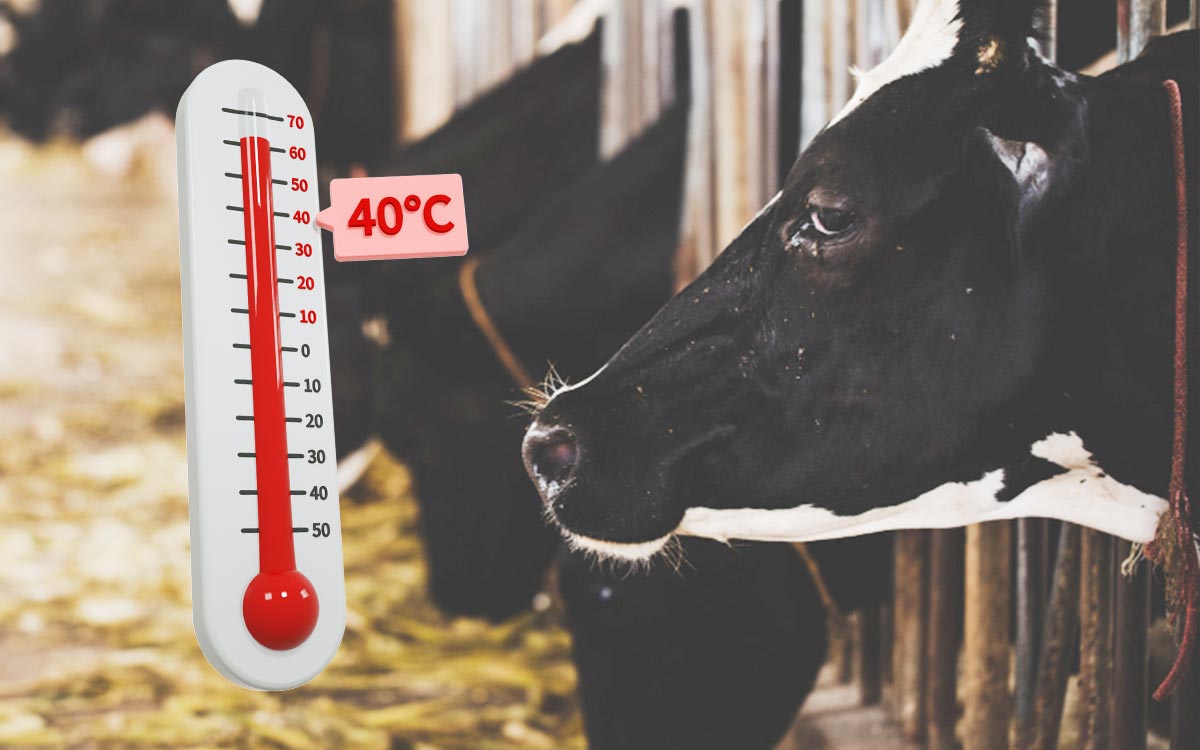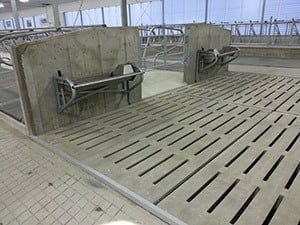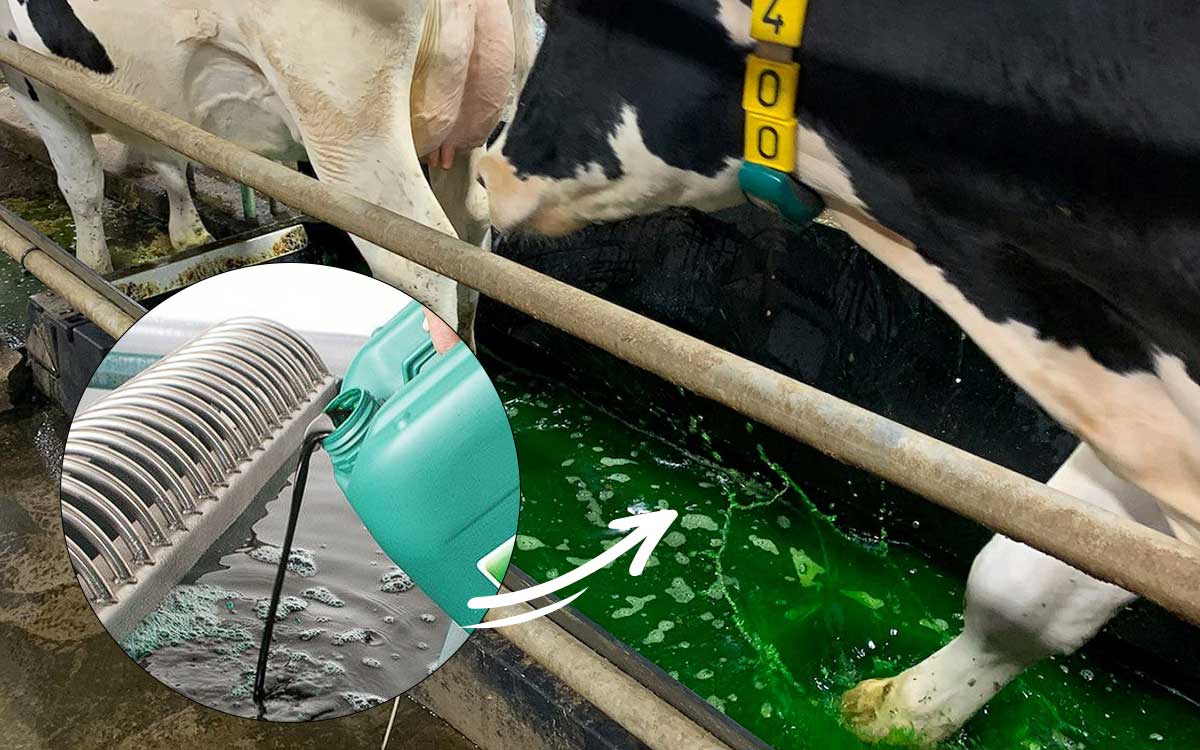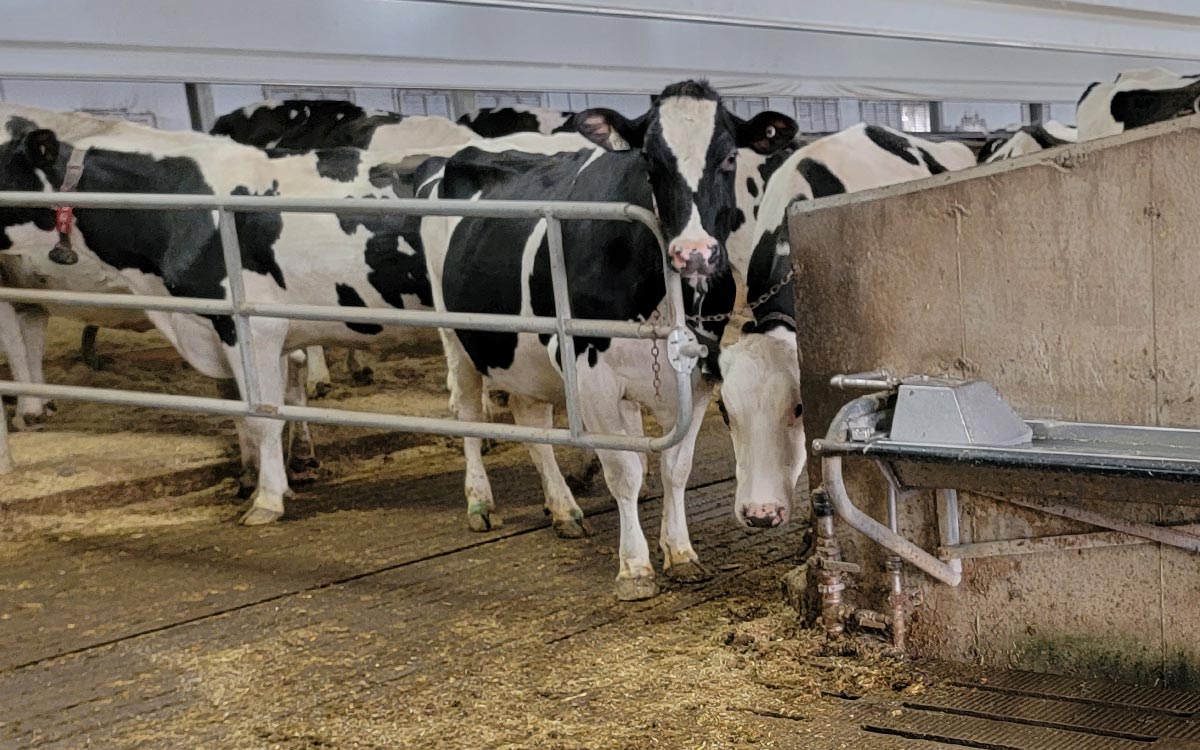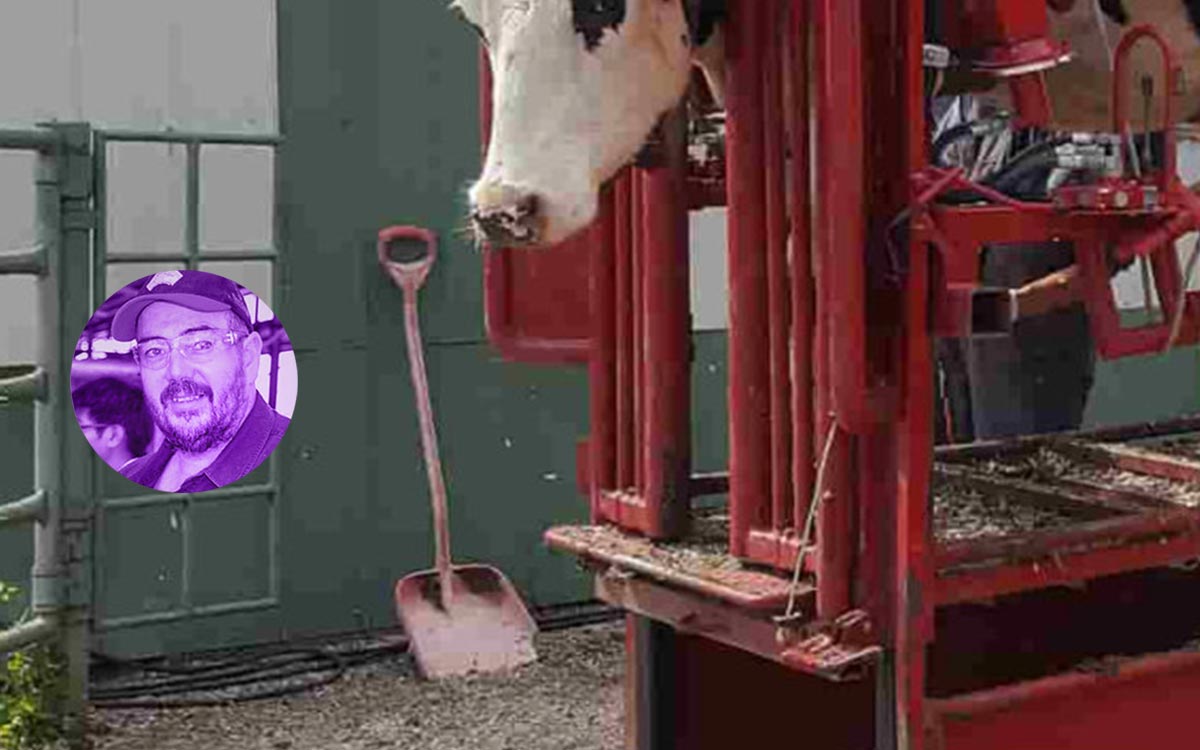We read a lot about heat stress in dairy cows. And while I certainly don’t have definitive answers on how we’re going to solve the issue of heat stress, I do know this for sure: a cow, just like her hoof trimmer, prefers a cooler environment over hot and stuffy surroundings. With that said, I can definitely share some tips that’ll help you in dealing with heat stress.
How does heat affect your herd?
The best way to get an idea of how the heat affects your herd is to monitor the animals’ behaviour. A cow will search for the most comfortable place in her environment when temperatures are rising. It’s the same with us hoof trimmers. In the morning, we start off warmly dressed. Then at some point, the shirt comes off. A little later perhaps, a roof goes over the chute to create shade. Often, a large water jug appears beside the chute, and don’t forget the quick dive into the creek during lunch break. We are just trying to make our day more comfortable so we can optimize our performance.
Let’s go back to our dairy cows. They have no shirts to remove or the option to go down to the creek. What about a water jug for them? They are totally at the mercy of their owner. Cows do not have very many active sweat glands, and their main way of losing heat is through their breath. Still, they will try to make the best of the situation with the means available to ensure their survival and optimize their performance.
How does heat stress affect the hooves of dairy cows? Most often, they stand for longer periods when it is hot, as this lets them catch a breeze and cool off a bit. However, the four hooves of a cow can’t take standing on hard surfaces for extended periods of time. She’s already dealing with waiting times before milking, eating, etc., and the hot weather might just tip the scales towards lameness problems.
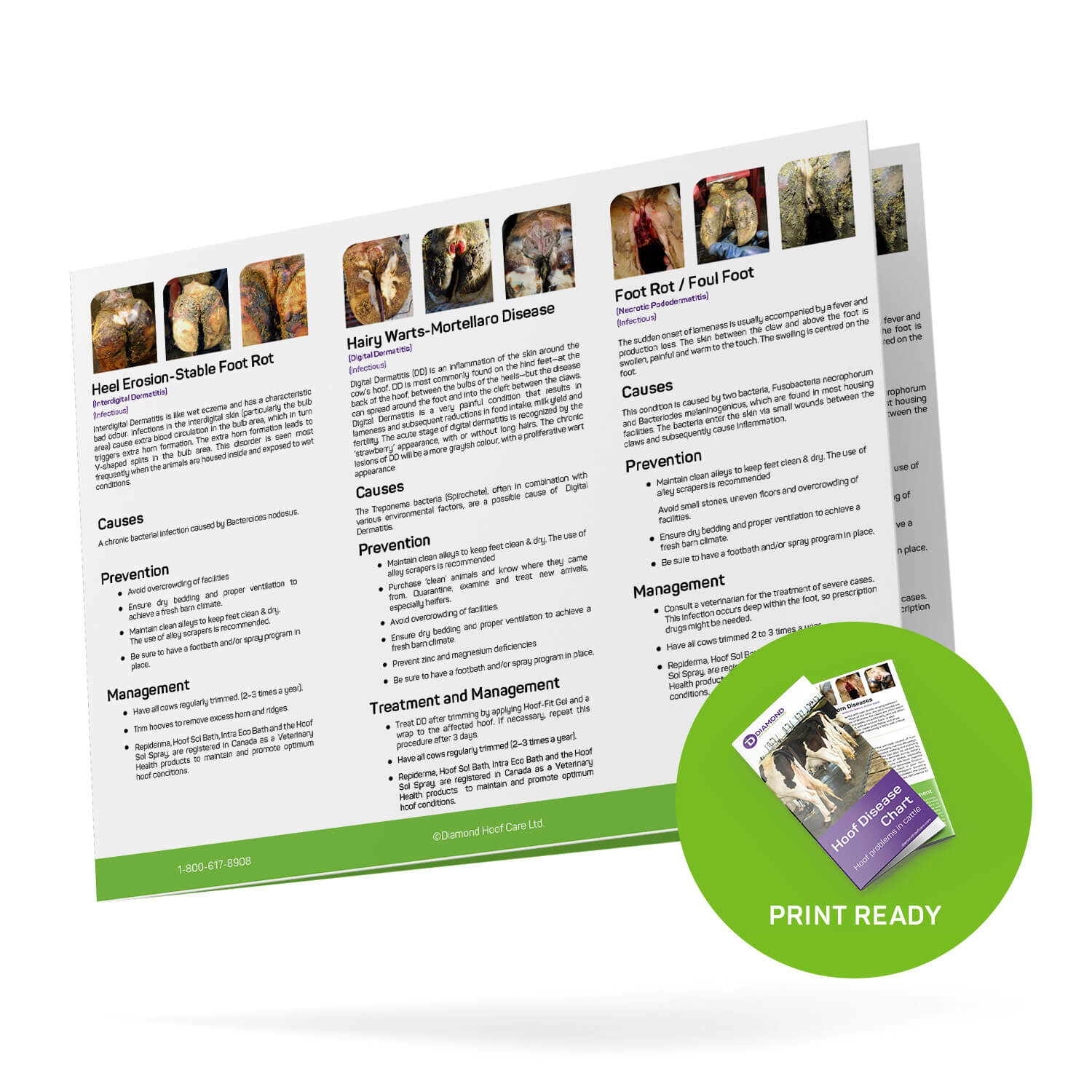
Hoof Disease Reference Chart
Tips for dealing with the heat stress challenge
What can you do to help your dairy cows cope with the heat stress challenge? I’ve got some tips that will allow you to get and stay on track.
- Ensure that good and clean water is available. I’ve seen herd owners place a long gutter or extra tubs among the animals in the summer months to avoid waiting times when they need their drink.

Figure 1. First tip to deal with the heat stress: ensure clean water is available for your herd. - If your herd is in dry lots, make sure there’s a shady area to keep the direct sun rays away from your animals.
- Use adequate misters or sprinklers to bring the area air temperature down.
- Deploy fans to create air movement, so the cow feels more comfortable.
- Use proper fly control: it doesn’t help the cow if she has to battle both the heat and insects.
- Watch standing times: a cow will stand in drafty areas to optimize cold air flow around her whole body.
- Have a proper trimming procedure in place. Make sure that the hooves are in optimal condition before the heatwave. By doing that, you’re eliminating and/or preventing other hoof problems from occurring. The animal is under enough stress from dealing with the heat: avoid adding to it wherever possible.
- Avoid having low spots in your dirt lots: the cow knows where they are and uses them for cooling. The disadvantage of this cooling method is that these areas are often muddy and difficult to manage. This means that the chances of developing mastitis are very high. Additionally, digital dermatitis (warts) can spread easily in these muddy and wet conditions. Create other cooling alternatives.
Other resources about heat stress
In conclusion, let me point out that this article and list don’t provide a complete overview of the subject. Heat effects will differ widely across geographic areas and environments (facilities). Keep your eyes open around your own dairy cows and ask for professional opinions and advice from your veterinarian and/or hoof trimmer.
If you want to send me any ideas or suggestions, please contact me through the contact page.
Finally, I would also like to this article, written by professionals in cooling management:
Best of luck in keeping your animals cool!
